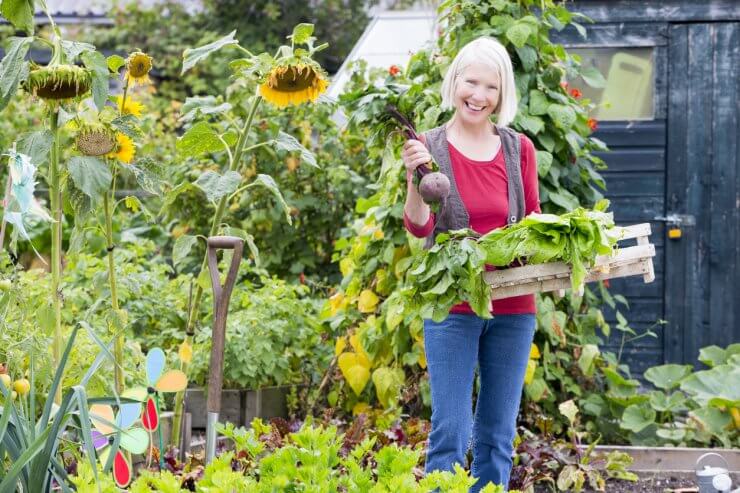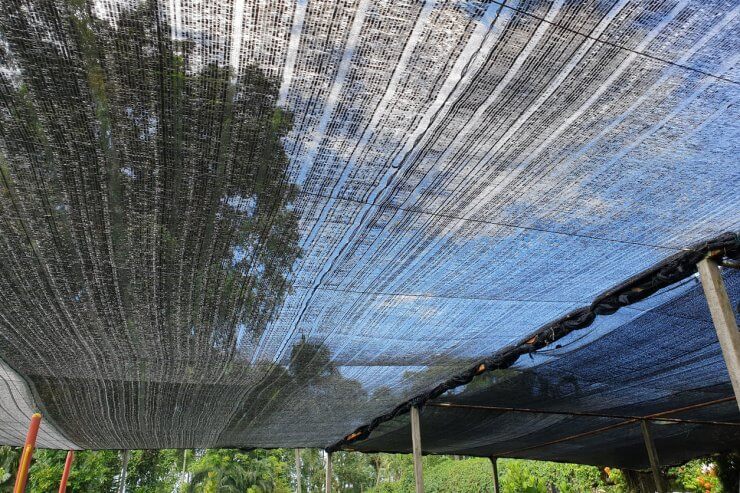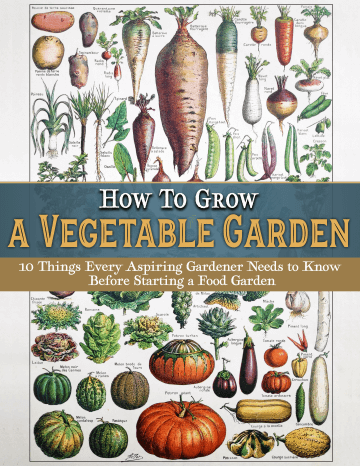
Ever go to the beach? The sun feels blissful. It’s bright and hot enough that it coerces you into the cold ocean waters. Then, after an hour or so, it gets unpleasantly hot. You wish you had the foresight to bring a beach umbrella. Instead, you’re just cooking because your friends aren’t ready to leave, but you also don’t feel like getting tossed around in the waves anymore. So you end up seeing how small you can get to fit your whole body under your beach towel.
That’s kind of how your veggies and herbs feel if you aren’t shading plants from the sun when they need it. Clearly, your vegetable garden isn’t taking vacations on the beach, but some of your plants do need shade, or they, too, will wilt and wither.
It’s your job to set them up with a nice beach umbrella and bring them a cold beverage, in a manner of speaking, anyway.
Discover 10 top tips for growing, harvesting, and enjoying fruits, vegetables, herbs and more from your home garden—when you access the FREEBIE How to Grow a Vegetable Garden, right now!

Why shading plants from the sun is easier than you think
Some plants, like tomatoes, enjoy plenty of sunshine. Others, like lettuce, aren’t too happy about roasting under those sweltering rays. That’s why shading plants from the sun is an integral part of gardening. And, no, you don’t have to stand over them with a beach umbrella, although you could if you wanted to.
- Companion planting. Of the many benefits of companion planting, shading plants from the sun is an oft overlooked one. Basil, for instance, enjoys the sun, but also appreciates a little bit of afternoon shade, making it ideal for companion planting with tomatoes.
- Location planting. Another easy way to shade your plants is to plan your garden according to your natural environment. Trees, shrubs, or structures such as a garage or your home may already provide shade to some parts of your yard. Plan your garden to take advantage of this, ideally locating it so your shade-loving plants can get out of the mid-afternoon sun.
- Sunflowers. Sunflowers are easy to grow, they’re beautiful, and they can get up to 10 feet tall! That’s some prime shade right there. And since they grow with your garden, they’ll offer more shade as the summer heats up. Plant them on the south or west side of your garden, so your plants get plenty of morning light. Just be aware that they can be terrible companions for some plants, so it may be best to grow them a few feet away from your vegetable garden.
- Vining plants or flowers. A trellis and a few vining plants like morning glories or cantaloupes may be all you need for shading plants from the sun on a hot summer day.
- Honeysuckle. Like sunflowers, honeysuckle can create a natural barrier between your garden and the hot summer sun. It smells lovely, looks beautiful, and it also attracts pollinators. It can also be invasive, so it will need to become part of your pruning routine.
Discover 10 top tips for growing, harvesting, and enjoying fruits, vegetables, herbs and more from your home garden—when you access the FREEBIE How to Grow a Vegetable Garden, right now!
You don’t need to stick to natural solutions, either. I was only partially joking earlier when I suggested the beach umbrella. You don’t have to hold it, either; just be aware that you’ll need to watch out for high winds. Shade cloths work, too, and they are generally inexpensive, but the quality can vary pretty widely.
Whatever your decision, enjoy your time in the garden.
How do you give your garden some shade? Share your ideas in the comments. I’d love to know if you have a preference for natural solutions or if you find it easier and more effective to buy something.




